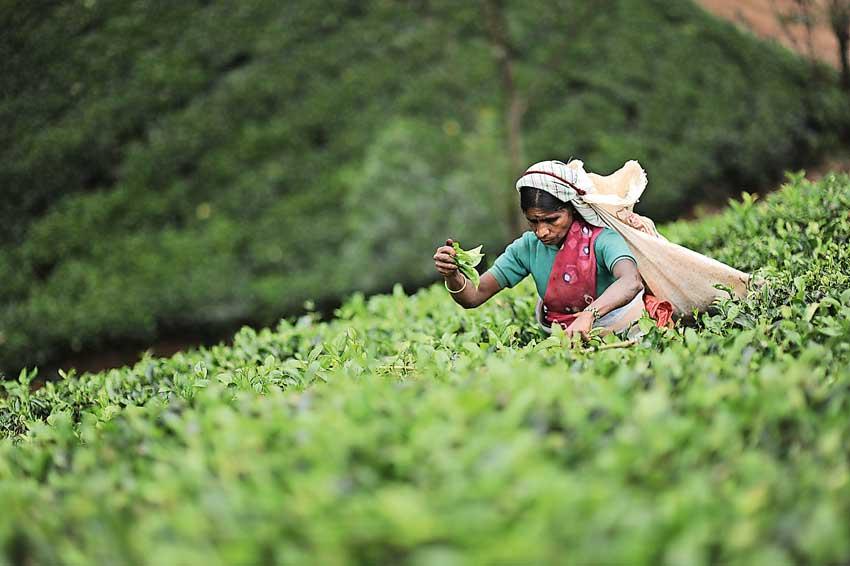07 Jan 2021 - {{hitsCtrl.values.hits}}

Sri Lanka’s tea output is projected to recover this year, following an estimated 10 percent or 30 M/Kgs year-on-year (YoY) decline in the output in 2020, mainly due to the adverse weather conditions prevailed in the country, according to Forbes & Walker Tea Brokers.
“Sri Lankan tea output although is likely to recover in 2021, is unlikely to achieve the highs registered from 2010 to 2015. Therefore, the supply situation would continue to remain tight,” the tea broker stated, touching on the industry prospects for 2021. Sri Lanka’s 2020 tea output is estimated to remain marginally above 270 M/Kgs in 2020, recording the lowest output seen over a decade and falling behind the original target of 340 M/Kgs set for the year.
Accordingly, Sri Lanka’s tea export volume is estimated to have declined by approximately 27 M/Kgs in 2020, compared to 2019, recording a Rs.10-12 billion shortfall in tea export earnings, at around Rs.230 billion.
For 2021, the Sri Lanka Tea Board (SLTB) has set an export earnings target of Rs.300 billion, a similar target set for 2020.
On an encouraging trend, Forbes & Walker noted that the tea production in October and November recorded an increase of approximately 3 M/Kgs, compared to the same period of last year and hence, the fourth quarter of last year is expected to become the only quarter to post an increase in production in 2020.
Despite the record low production, Forbes & Walker highlighted that the average auction prices at the Colombo Tea Auction reached their highest ever value in rupee terms of Rs.628.21 in 2020, topping the previous all-time high of Rs.618.14 achieved in 2017. However, in US dollar terms, it was US $ 0.69 below the all-time high of US $ 4.11 recorded in 2017.
For 2021, the tea broker noted that the current tea prices are likely to remain at present levels up until the end of the first quarter of the year.
“Perhaps on a cautiously optimistic note, we could expect these levels to remain till around mid-2021. The tea prices thereafter would largely depend on the supply scenarios that unfold during the first quarter of 2021,” it added.
Despite the optimistic outlook for the prices, Forbes & Walker cautioned that the tea industry continues to be challenged with regular wage increases and lower rates of mechanisation, which would continue to undermine the competitiveness, resulting in further higher average production costs above the competitor exporting countries.
In 2020, the prices of high-grown teas improved by Rs.72.27 or US $ 0.30 to Rs.580.90, while the prices of medium-grown teas made a gain of Rs.84.98 or US $ 0.37, reaching Rs.553.94 on average. Meanwhile, the average prices of low-grown teas reached the all-time high of Rs.666.32, up by Rs.89.71, compared to 2019.
In the fourth quarter of 2020, the average auction prices improved by Rs.89.44 to Rs.643.15, compared to the same period in 2019, led by significant gains in high-growns and mid-growns.
Up to October last year, the Colombo Tea Auction, along with the Kolkata, Cochin and Guwahatti tea auctions, saw their auction prices climbing up. However, the auction prices in the African tea auctions, including Mombasa, saw their prices dipping during the same period. Overall, the Colombo Tea Auction, which went fully digital during the year, recorded the highest auction prices.
Meanwhile, Sri Lanka’s tea exports to most of its key markets fell in the 11 months of 2020, with Russia, Chile and China being exceptions.
During the period, the tea export volumes to Russia, which is the third largest buyer of Ceylon Tea, improved by 1.8 percent YoY to 27.4 M/Kgs.
China became the fifth largest buyer of Ceylon Tea in the period with tea export volumes jumping by 15.3 percent YoY to 12.25 M/Kgs.
Chile was the largest growing market for Ceylon Tea during the period, with export volumes increasing by over 38 percent YoY to 8.9 M/Kgs.
In addition, Ceylon Tea exports to Saudi Arabia, Poland, Egypt and Israel also increased during the period.
However, Ceylon Tea exports to Iran declined by a whopping 30.06 percent YoY to 14.2 M/Kgs during the period, mainly due to the trade restrictions imposed on the country. Similarly, the tea export volumes to the UAE and Turkey, which are considered to be trading hubs, also declined by 3.4 percent YoY and 15.6 YoY in the period.
However, Turley remained as the largest importer of Ceylon Tea in the period, with export volumes amounting to 34.6 M/Kgs in the period, as tea export volumes to Iraq declined by 16 percent YoY to 29.7 M/Kgs. (NF)
20 Nov 2024 42 minute ago
20 Nov 2024 4 hours ago
19 Nov 2024 9 hours ago
19 Nov 2024 9 hours ago
19 Nov 2024 19 Nov 2024